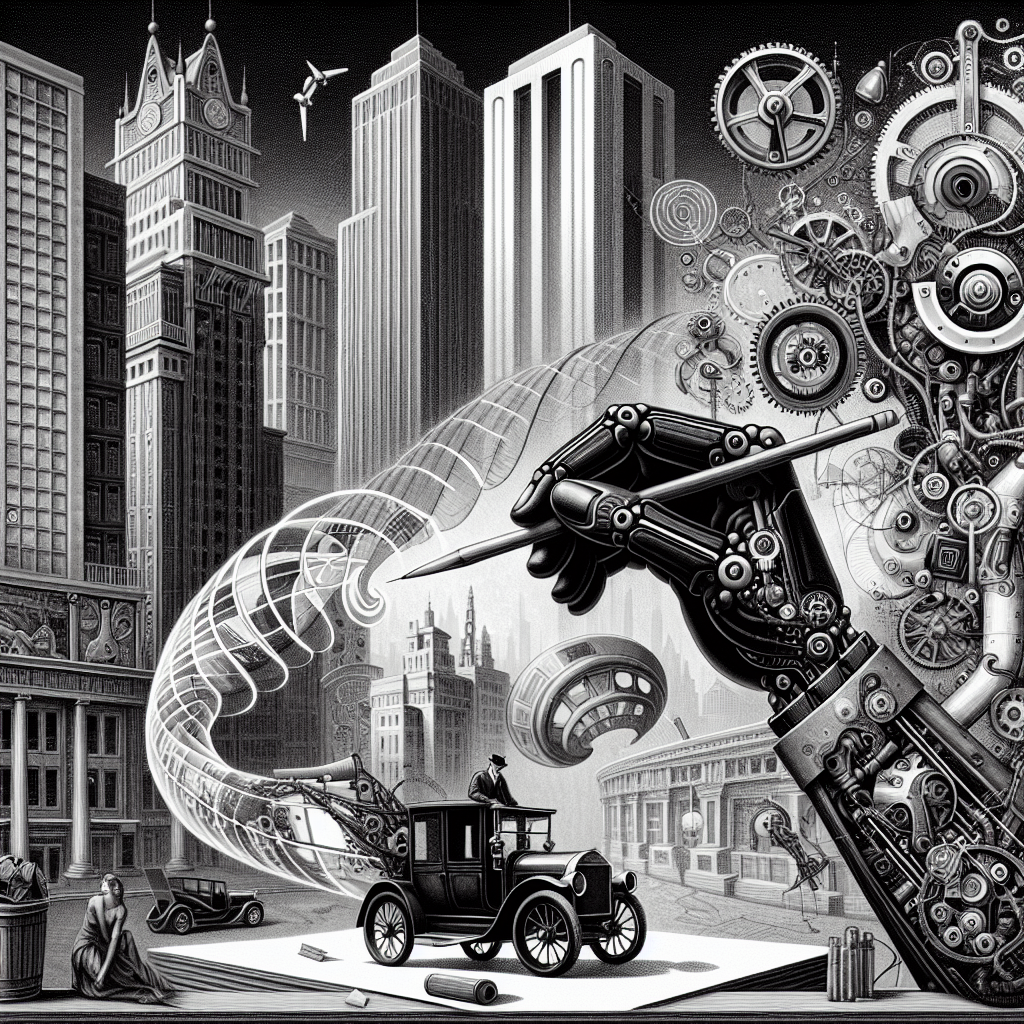
In our digital age, we're swimming in a sea of content. From social media posts to news articles, information floods our screens at an incredible rate. But here's the catch: not all of this content is trustworthy. It's becoming increasingly difficult to separate fact from fiction, genuine from fake. This is where AI steps in, like a digital detective, to help us navigate these murky waters.
Artificial Intelligence is revolutionizing how we verify and authenticate content. It's not just about spotting fake news; AI is tackling everything from deepfakes to fraudulent narratives. These smart systems can analyze content faster and more accurately than humans, catching subtle inconsistencies we might miss. Think of AI as a super-powered fact-checker, working tirelessly to ensure the information we consume is legitimate.
This AI-driven approach to content authenticity is a game-changer. It's building trust among consumers and encouraging content creators and platforms to maintain high ethical standards. As AI technology continues to advance, we can look forward to a more reliable digital landscape where authenticity reigns supreme.
In today's digital world, understanding content authenticity is more important than ever. As we scroll through our feeds, we're bombarded with information from countless sources. But how can we tell what's real and what's not? Content authenticity is all about ensuring that the information we consume online is genuine, reliable, and true to its source.
When we talk about authenticity, we're looking at two key aspects: provenance and context. Provenance is about tracing content back to its creator, while context considers the circumstances surrounding its creation and sharing. These factors help us determine whether we can trust what we're reading or viewing.
This is where AI comes into play. With its impressive ability to learn and recognize patterns, AI is revolutionizing how we verify content. It can quickly analyze huge amounts of data, spotting inconsistencies that might slip past human eyes. By automating these checks, AI is helping to create a digital landscape where genuine information takes center stage, protecting us from misinformation and promoting ethical, reliable communication.
Jump to:
The Evolution of AI in Content Verification
Key Technologies Driving AI-Powered Authenticity
Benefits of AI in Enhancing Content Credibility
Challenges and Limitations of AI in Content Verification
Case Studies: AI Applications in Content Authenticity
Future Trends: AI and Content Authenticity
Conclusion
The evolution of AI in content verification is a fascinating journey that showcases the rapid advancements in technology. In its early days, AI systems relied on rule-based algorithms, which were limited by their inflexibility and struggled to adapt to new forms of content manipulation.
The introduction of machine learning marked a significant turning point. These AI systems could now learn from vast datasets, identifying patterns and anomalies that signaled authenticity issues. As more diverse data became available, the accuracy and adaptability of these models improved dramatically.
Today, we're seeing the power of deep learning and natural language processing (NLP) in content verification. These advanced technologies enable AI to grasp context and subtle language nuances, distinguishing between different tones in text and even identifying deepfake videos. Modern AI systems can analyze multimedia content comprehensively, examining visual and auditory elements alongside text.
This progression has significantly enhanced our ability to verify content, allowing for faster and more accurate detection of false information across various digital platforms.
Key Technologies Driving AI-Powered AuthenticityAI-powered authenticity relies on several key technologies to ensure the integrity of digital content. At the core of this process is machine learning, which allows algorithms to learn and adapt from extensive datasets. Through supervised learning, these systems can recognize patterns associated with fake or manipulated content, becoming increasingly accurate in spotting signs of inauthenticity.
Deep learning takes this a step further by using neural networks to process complex data patterns. These networks can analyze visual, textual, and audio content simultaneously, providing a comprehensive authenticity check. They're particularly effective at detecting deepfakes, identifying subtle manipulations that might escape human notice.
Natural Language Processing (NLP) plays a crucial role in understanding and analyzing human language within content. It helps AI assess sentiment, context, and subtle nuances in text, distinguishing genuine sentiment from artificial tones. This is essential for identifying misleading information in authentic-sounding text.
Blockchain technology also shows promise in establishing content provenance. By providing an immutable ledger, it can verify content origins and track changes, adding another layer of authenticity verification to our digital world.
Benefits of AI in Enhancing Content CredibilityAI is revolutionizing how we approach content credibility in the digital world. One of its most significant contributions is the automation of the verification process. Using advanced techniques like machine learning and natural language processing, AI systems can swiftly analyze enormous amounts of data, identifying inconsistencies and signs of misinformation. This rapid, accurate validation helps curb the spread of false or misleading content across various digital platforms.
The use of AI-driven tools for content authentication also enhances user trust. Publishers and platforms that employ these technologies can maintain higher standards of integrity, fostering stronger, more trustworthy relationships with their audiences. This is particularly crucial for brands and news outlets whose influence and business success depend on their credibility.
Moreover, AI plays a vital role in preserving content originality and upholding ethical standards. By detecting plagiarized or manipulated information, it protects intellectual property and ensures proper recognition for content creators. This contributes to a healthier digital ecosystem where authentic content can flourish, ultimately leading to a more informed society.
Challenges and Limitations of AI in Content VerificationWhile AI has made significant strides in content verification, it's not without its challenges and limitations. One of the primary concerns is the quality and potential bias in the datasets used to train AI models. If these datasets contain biased or incomplete information, the AI might produce skewed results, inadvertently spreading misinformation rather than combating it.
Another significant challenge is keeping pace with evolving misinformation tactics. As those intent on spreading false information develop more sophisticated methods, AI systems must continuously adapt, which requires substantial time and resources.
Deepfake technology presents a particularly formidable obstacle. These AI-generated videos are incredibly realistic, making it difficult even for other AI systems to detect manipulation. Additionally, AI can struggle with nuanced context and linguistic subtleties, potentially misinterpreting tone, sarcasm, or cultural references.
Lastly, the computational demands of AI verification systems are considerable. The substantial processing power and energy required can limit accessibility and scalability for many organizations. Balancing these challenges while maintaining effective content verification remains a complex task for AI developers and researchers.
Case Studies: AI Applications in Content AuthenticityReal-world examples provide fascinating insights into how AI is enhancing content authenticity. Take Storyful, for instance. This platform uses AI tools to verify user-generated content. Their machine learning algorithms can quickly trace a video's origins and compare it against a database of verified content. This process is crucial for ensuring that news outlets report accurate information, especially when it comes to videos shared on social media.
Twitter offers another compelling case study. They've harnessed the power of natural language processing to detect and combat misinformation. Their AI system flags potentially misleading tweets for human review, creating an effective blend of AI efficiency and human judgment.
In the fight against deepfakes, companies like Deeptrace are leading the charge. Their AI technologies analyze videos for pixel-level inconsistencies and audio-visual mismatches, providing a powerful tool to identify these deceptively realistic videos.
These examples underscore AI's growing importance in verifying content credibility. Its ability to rapidly process vast amounts of data is helping organizations maintain higher standards of truthfulness in our digital information landscape.
Future Trends: AI and Content AuthenticityThe future of AI in content authenticity looks promising, with several exciting trends on the horizon. One significant development is the integration of AI with blockchain technology. This powerful combination could revolutionize content authenticity by creating a decentralized, tamper-proof record of content provenance. By tracking content from its source, blockchain can help verify its originality and integrity.
We're also seeing remarkable advancements in AI-driven neural networks. These networks are becoming increasingly adept at analyzing complex data sets, making it easier to spot subtle manipulations in multimedia content. This capability is crucial in our fight against sophisticated deepfakes and other forms of digital misinformation.
Real-time content verification is another area where AI is making strides. We can expect quicker and more accurate assessments of content as it's published. Natural language processing (NLP) is also becoming more nuanced, allowing AI to better understand context, sentiment, and subtleties in human communication.
Looking ahead, we may see AI systems integrated more seamlessly into content creation platforms, offering users automated verification tools at the point of creation. As these technologies mature, they'll contribute to a more transparent and trustworthy online environment.
ConclusionThe integration of AI in content authenticity is a game-changer in managing the integrity of digital information. By combining technologies like machine learning, natural language processing, and neural networks, we now have powerful tools to spot inconsistencies and misinformation in online content. This is a huge step forward for content creators, publishers, and platforms who are striving to enhance the credibility of the information they share.
When we add blockchain to this mix, we get an extra layer of security. Blockchain ensures traceability and proves where content originated from. This combination of AI and blockchain creates a formidable defense against deepfakes and other sophisticated forms of misinformation.
One of the most exciting aspects of AI in this field is its ability to verify content in real-time. This not only helps with immediate detection of false information but also helps maintain content integrity over the long term.
As these AI solutions continue to advance and become more widespread, they'll play a crucial role in creating a digital ecosystem where trust and transparency are at the forefront. Embracing these technologies is essential as we navigate the complex world of information validation in our digital age.
AI is revolutionizing the way we approach content authenticity in our digital world. It's like having a super-smart detective on our side, tirelessly working to ensure the information we consume is accurate and trustworthy. With its impressive ability to sift through enormous amounts of data, spot patterns, and grasp the subtleties of language, AI is becoming our strongest ally in the battle against fake news and misinformation.
As technology marches forward, we're seeing exciting developments in how AI works with other systems. For instance, when paired with blockchain, AI becomes even more powerful in tracing content back to its source and verifying its authenticity. This dynamic duo is not only great at spotting deepfakes and misleading content, but it's also helping to create a more honest and reliable online space for all of us.
For anyone who cares about maintaining high ethical standards in the digital content world, embracing these AI-driven solutions is a must. By staying on top of AI advancements, we can ensure that integrity remains at the heart of our online experiences, creating an environment where truth and accuracy reign supreme.




